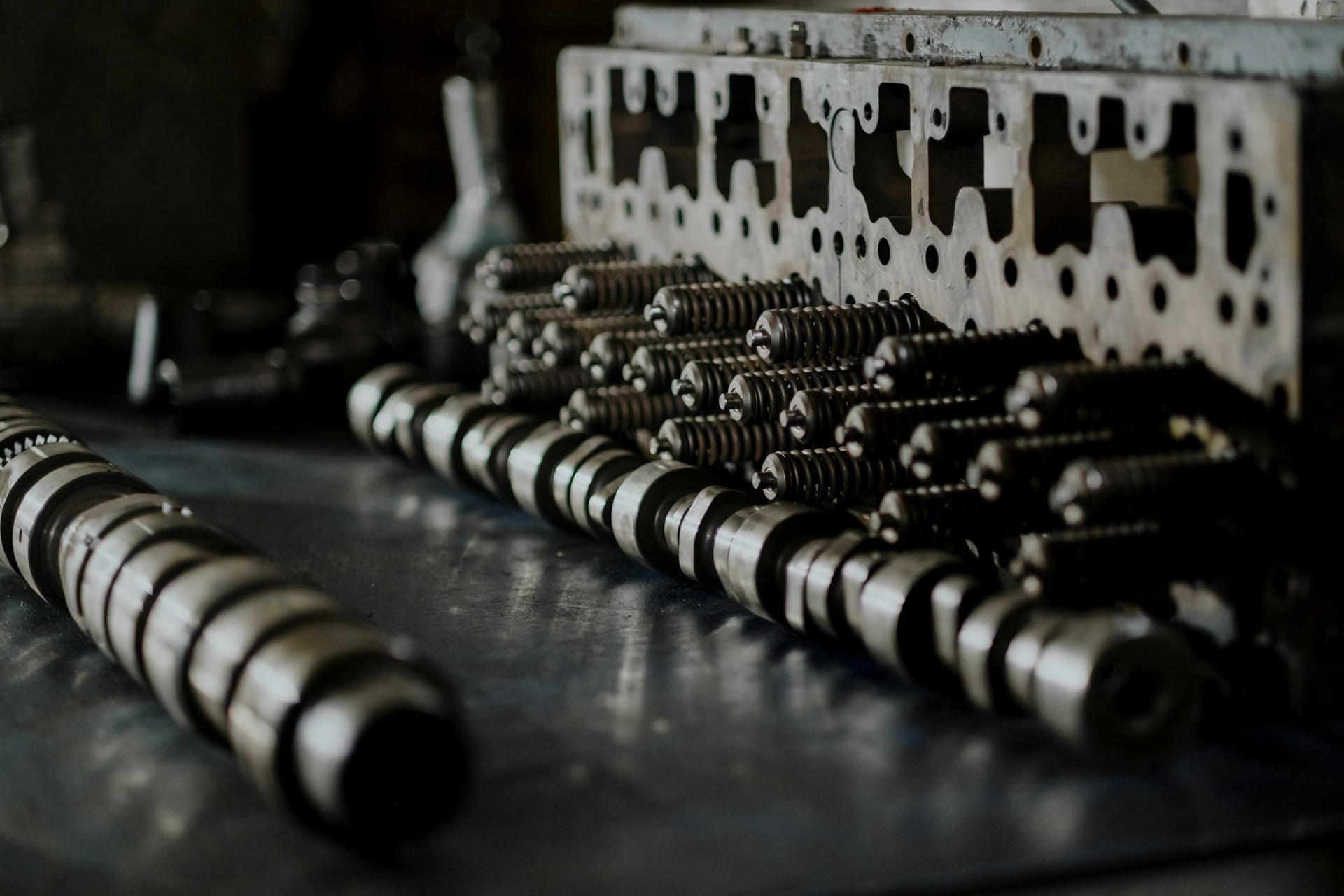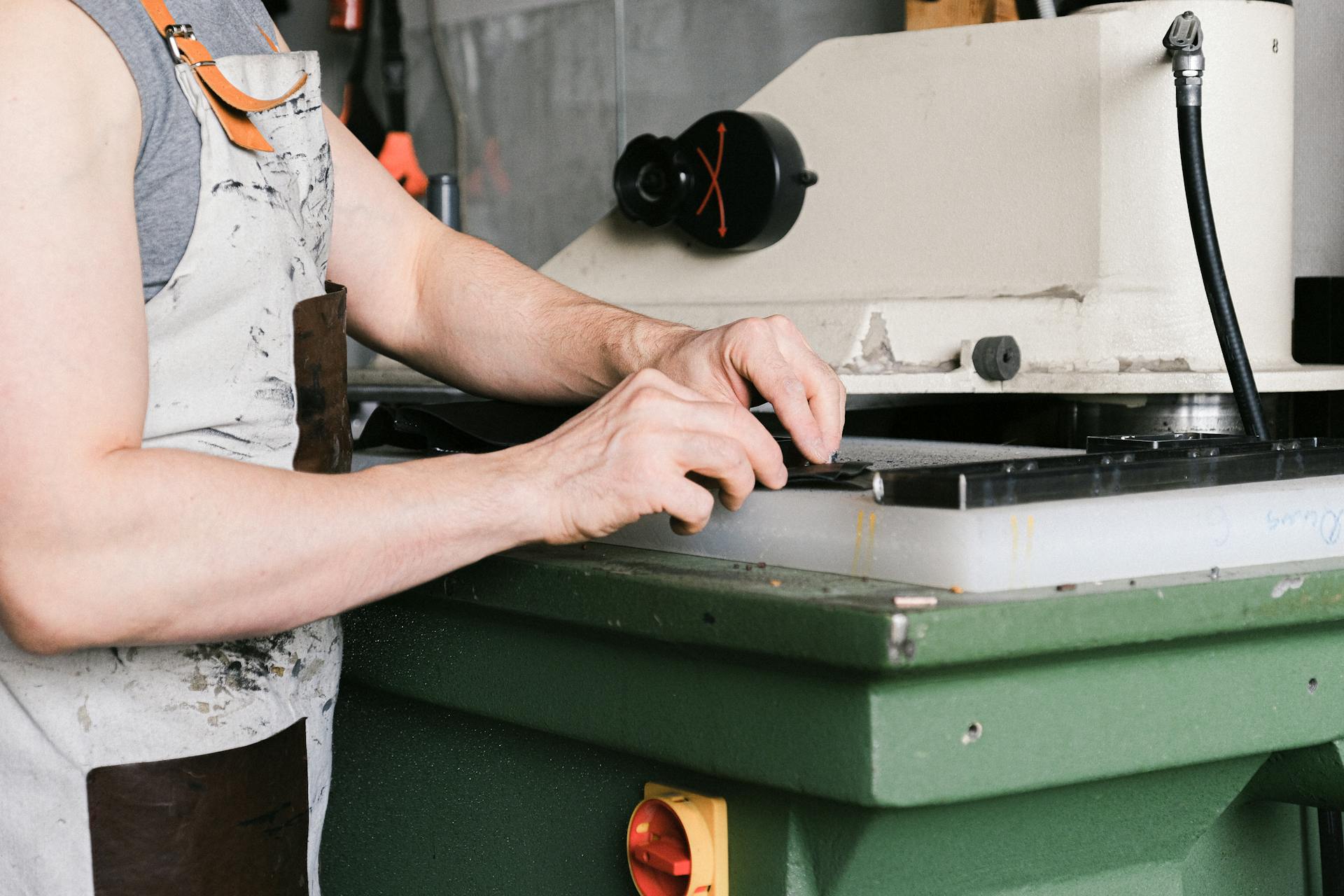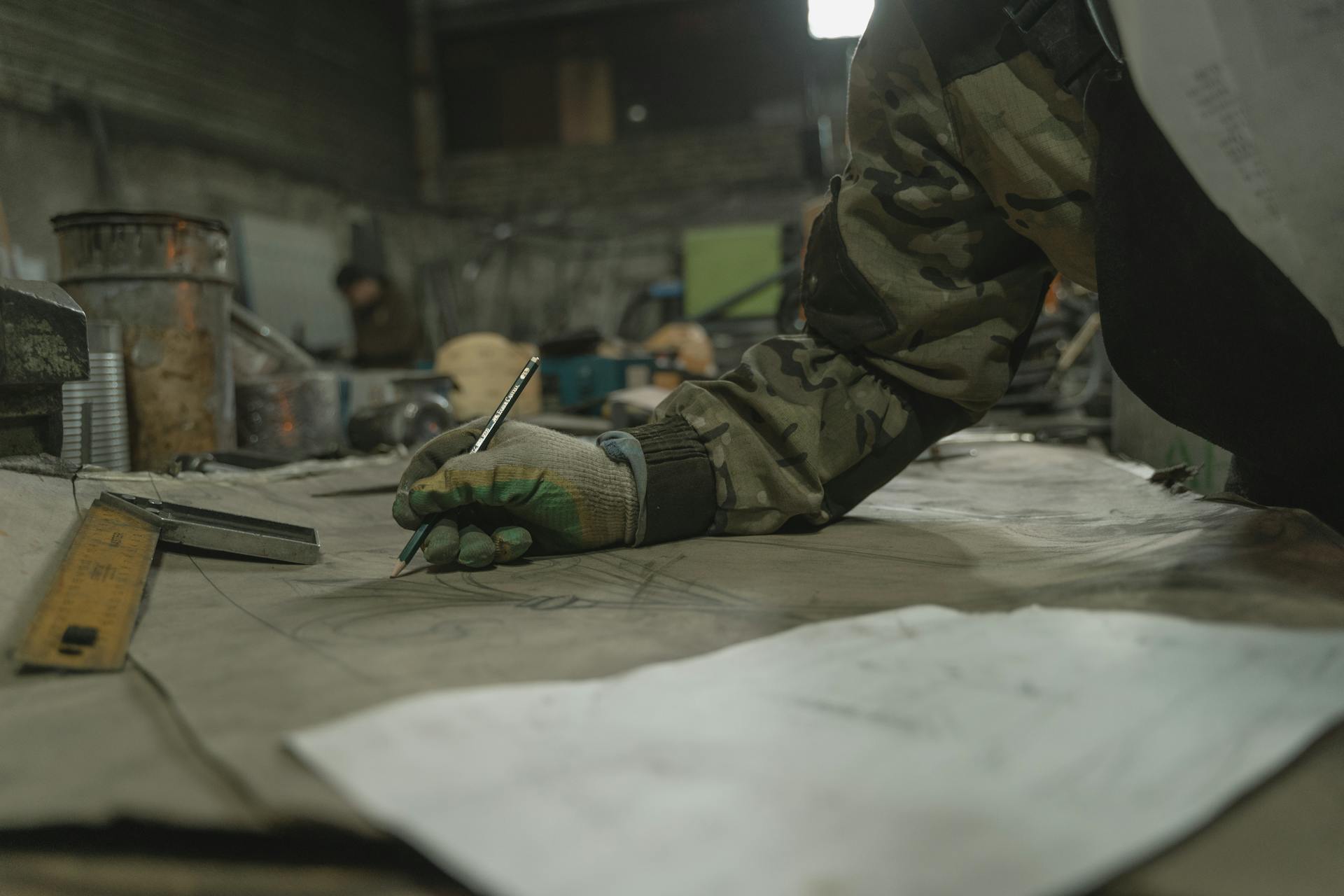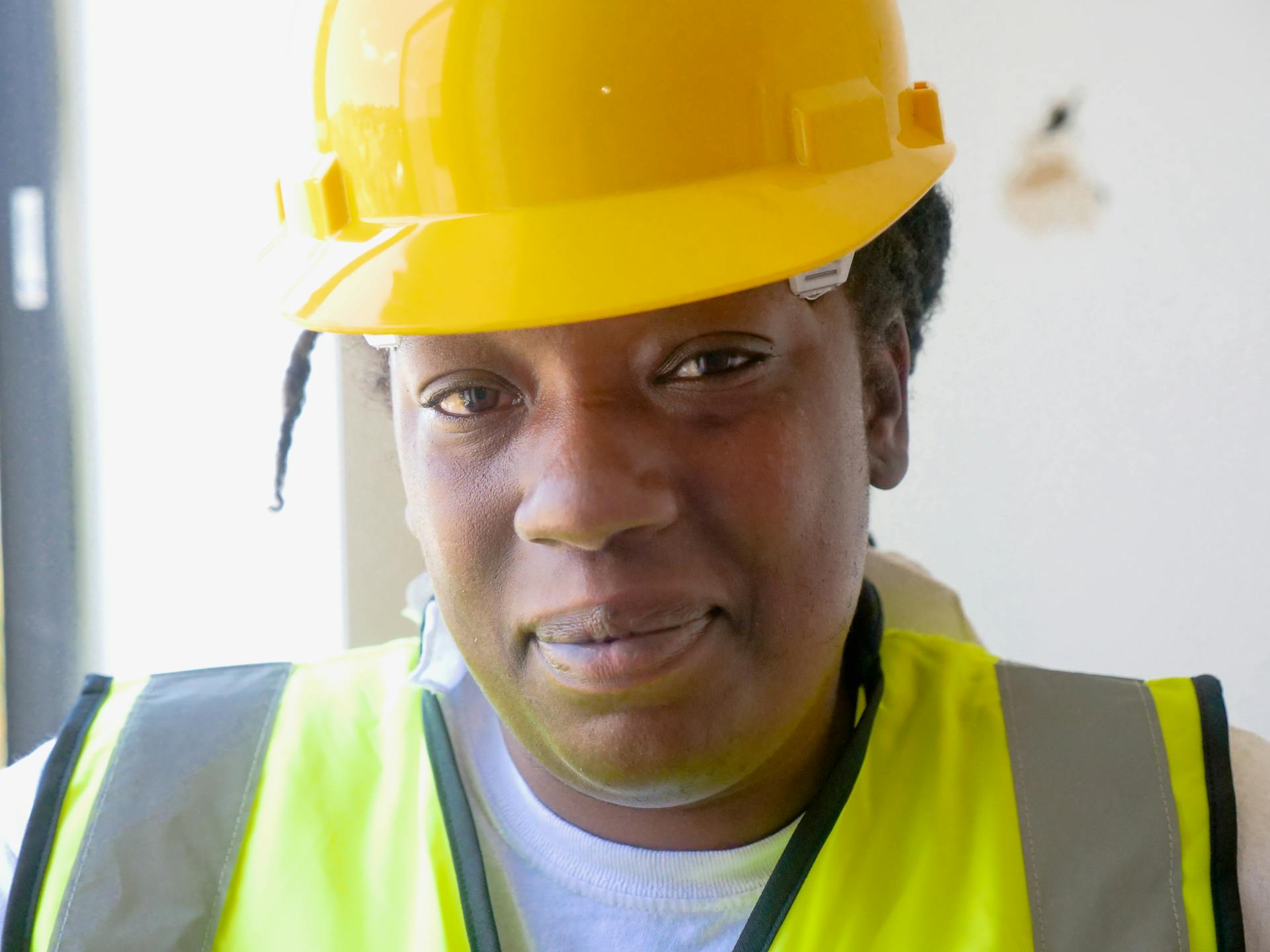
The Albina Engine & Machine Works shipyard had a long and storied history. It was a major shipbuilding facility in the Pacific Northwest.
The shipyard operated from 1916 to 1964, producing a wide range of vessels, including cargo ships, tankers, and naval vessels. It played a significant role in the region's maritime industry.
Unfortunately, the shipyard's operations also led to serious asbestos problems. Workers were exposed to asbestos fibers, which were used in shipbuilding materials like insulation and fireproofing.
As a result, many former shipyard employees suffered from asbestos-related illnesses, including mesothelioma and lung cancer.
History of Albina Engine & Machine Works
Albina Engine & Machine Works has a rich history in shipbuilding, particularly during World War I. They built 17 cargo ships, known as Hulls #1 to 17, which were requisitioned by the United States Shipping Board (USSB).
These early ships had some notable fates, including the SS Dorothy Phillips, which was one of the first ships built, Hull #1. The Point Bonita Hull #3 was wrecked in 1953, while the Point Lobos/Skjold Hull #4 burnt in 1967.
Some of the ships built during this time period include the Cadaretta Hull #7, the Caddopeak Hull #8, which was renamed USS Besboro, and the Callabasas Hull #9, which was torpedoed and lost in 1942 as Watsonville.
Suggestion: BAE Systems Maritime – Naval Ships
World War I

During World War I, Albina Engine & Machine Works made a significant contribution by building 17 cargo ships between 1918 and 1919. These ships, known as Hulls #1 to 17, were later requisitioned by the United States Shipping Board (USSB).
The Point Loma/Margit Hull #1 was renamed SS Dorothy Phillips, and the Point Arena/Erling Hull #2 was built during this period. Unfortunately, not all of these ships had a long lifespan.
Some of the cargo ships built for World War I met with tragic ends, including the Point Bonita Hull #3, which was wrecked in 1953, and the Point Lobos/Skjold Hull #4, which was burnt in 1967.
Here's a list of some of the ships built by Albina during World War I:
- Point Loma/Margit Hull #1 (renamed SS Dorothy Phillips)
- Point Arena/Erling Hull #2
- Cadaretta Hull #7
- Caddopeak Hull #8 (renamed USS Besboro)
- Callabasas Hull #9 (torpedoed and lost in 1942 as Watsonville)
- Glendola Hull #11 (torpedoed and lost in 1940)
- Meriden Hull #16 (scuttled in 1946, renamed USS Majaba)
The remaining ships also had varying fates, including being foundered, torpedoed, or sunk by gunfire.
The Office, c.1943
The Albina Engine & Machine Works office in 1943 was a bustling hub of activity, with hundreds of new workers joining the payroll during World War II.

Women dominated clerical jobs, including accounting and bookkeeping, and were responsible for keeping track of employee records, payroll, supplies, contracts, and production.
The office was equipped with Underwood Elliott Fisher book typewriters, which were advertised as the most versatile typewriters on the market.
These typewriters allowed typists to write on any size sheet of paper or book-page, making them suitable for adding data to spreadsheets and other non-standard-sized paper.
Typists could move the typewriter around on a horizontal sheet of paper and line it up using the ruler attached to the front of the machine, creating a copy using carbon paper.
Asbestos Exposure and Lawsuits
Asbestos was used extensively at Albina Shipyard, with hundreds of components in ships and machinery, including insulation, boilers, and welding gear.
Many workers were exposed to asbestos, even if they didn't directly handle it, because fibers contaminated the air.
Shipyard workers have some of the highest rates of asbestos illnesses, including mesothelioma, lung cancer, and asbestosis.
Asbestos lawsuits against Albina Shipyard have been filed, with one notable case involving a former worker who developed mesothelioma.
In 2002, James McCallister, a shipyard carpenter, passed away from mesothelioma, and his wife filed an asbestos lawsuit against Albina.
The court ultimately ruled that Albina was the "last responsible" employer and financially responsible for McCallister's illness.
If you or a loved one worked at Albina and developed an asbestos illness, you may be eligible for compensation.
Asbestos attorneys can help identify responsible companies, file lawsuits, and seek settlements or compensation from asbestos trust funds.
Here are some examples of asbestos-containing items used at Albina Shipyard:
- Machinery and equipment
- Welding gear and materials
- Fire protection gear
- Insulation
- Boilers
- Gaskets
- Pipes
- Furnaces
- Concrete
Shipyard Operations
Shipyard Operations at Albina Engine & Machine Works were a marvel of efficiency. The shipyard was strategically located on the Willamette River, allowing for easy access to the ocean and reducing transportation costs.
The shipyard's operations were divided into several distinct areas, including the machine shop, foundry, and fabrication department. Each area was equipped with state-of-the-art machinery and tools, enabling the company to produce high-quality parts and equipment.
The Albina Engine & Machine Works team was known for their attention to detail and commitment to quality, as seen in their ability to produce complex parts and equipment for various industries.
How Shipyard Used Asbestos
The use of asbestos at shipyards like Albina was a common practice until the mid-1980s. Asbestos was used in hundreds of components in ship construction, including machinery and equipment.
Albina Shipyard workers came into contact with asbestos through their work, which involved building ships and making repairs. Asbestos fibers would become airborne and contaminate the air, putting anyone in the area at risk of inhaling them.
Asbestos was used in various products and materials at Albina Shipyard, including welding gear and materials, fire protection gear, insulation, boilers, gaskets, pipes, furnaces, and even concrete.
Here is a list of some of the asbestos-containing items found at Albina Shipyard:
- Machinery and equipment
- Welding gear and materials
- Fire protection gear
- Insulation
- Boilers
- Gaskets
- Pipes
- Furnaces
- Concrete
Construction
The construction of ships is a fascinating process, and in this section, we'll take a closer look at how ships were built in Portland, Oregon. Albina Engine & Machine Works in Portland, Oregon was one of the shipyards that played a significant role in shipbuilding.
For another approach, see: Oregon Shipbuilding Corporation
Built at Albina Engine & Machine Works in Portland, Oregon, Lightship No. 114 was one of six identical vessels. Four of these vessels were eventually required on the Atlantic stations, which meant that No. 114 had to make the long transit from Oregon to New York.
Lightship No. 114 was designed for a length overall of 133 feet 3 inches, with a waterline length of 108 feet and a beam of 33 feet. The draft was 11 feet 9 inches forward and 13 feet 3 inches aft.
The design of Lightship No. 114 was unique, with four Winton Engine Corporation four-cylinder diesel engines connected to 75 kilowatt, 125-volt General Electric generators. These generators could be coupled to develop 350 horsepower on the propulsion motor at 300 revolutions.
Two 7.5-kilowatt Cummings diesel generating sets were also provided for auxiliary and in-port power, and an oil-fired boiler provided heating.
Here's a summary of the dimensions of Lightship No. 114:
The construction of Lightship No. 114 was a remarkable achievement, and it's a testament to the skill and expertise of the shipbuilders at Albina Engine & Machine Works.
Sources
- https://en.wikipedia.org/wiki/Albina_Engine_%26_Machine_Works
- https://www.oregonhistoryproject.org/articles/the-albina-engine-machine-works-office-c1943/
- https://mesothelioma.net/albina-shipyard/
- https://commons.wikimedia.org/wiki/Category:Ships_built_in_Portland,_Oregon
- https://www.wikiwand.com/en/articles/Lightship_No._114
Featured Images: pexels.com


